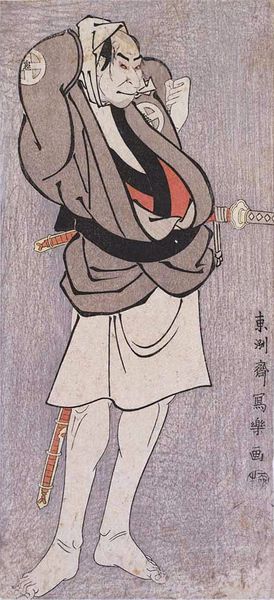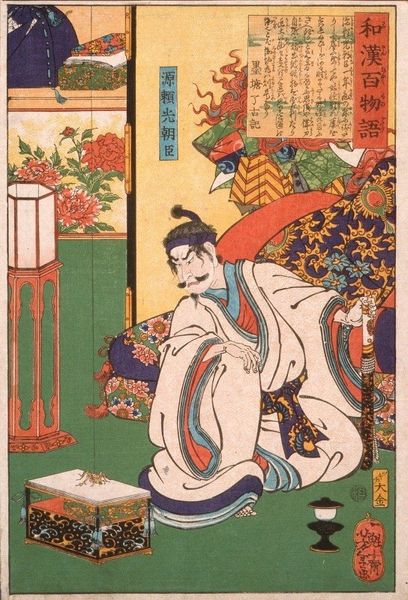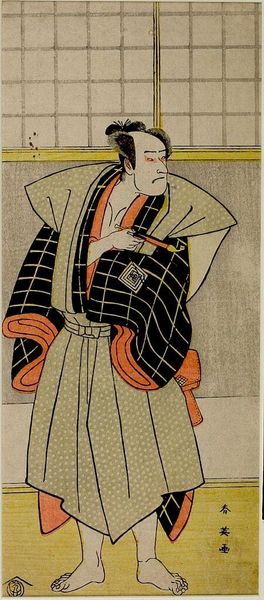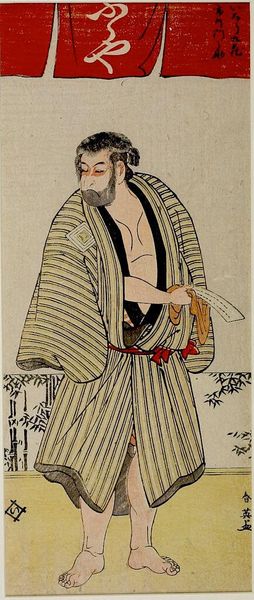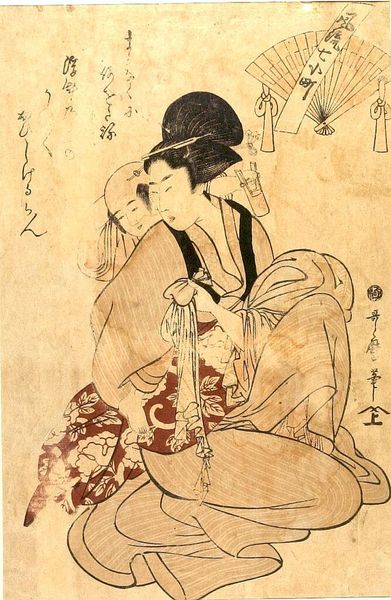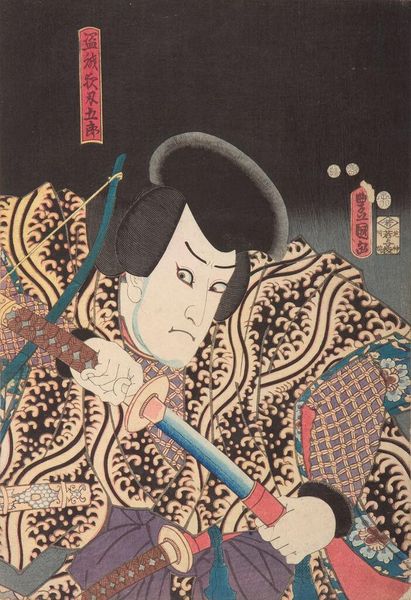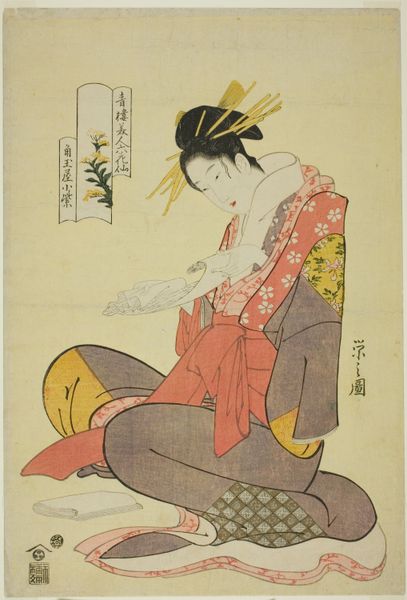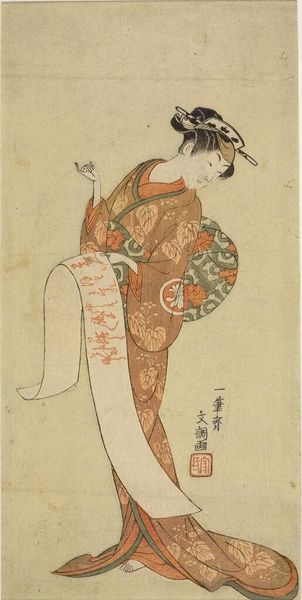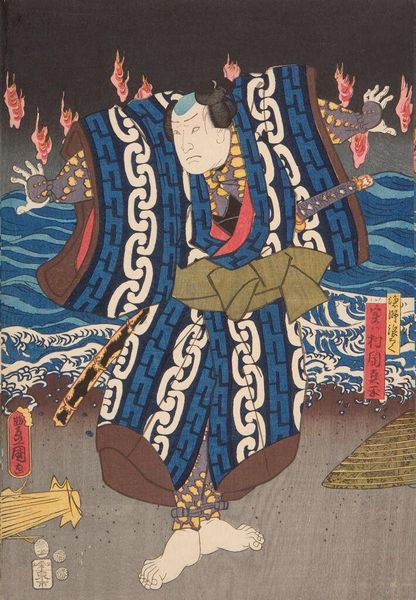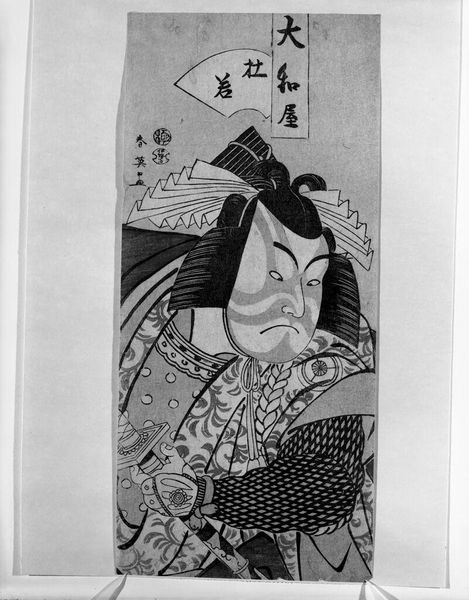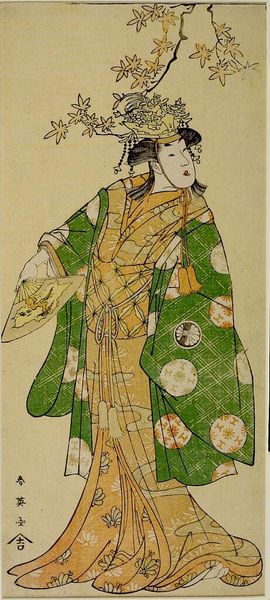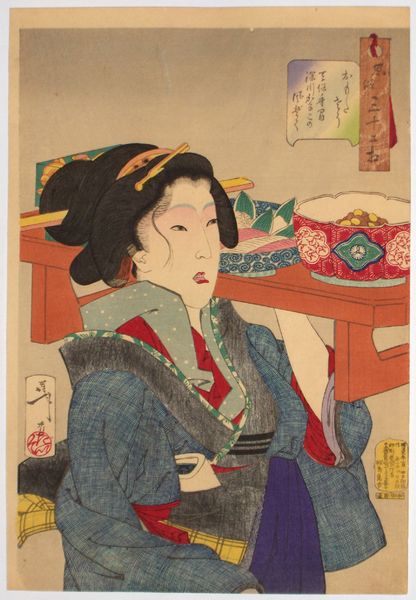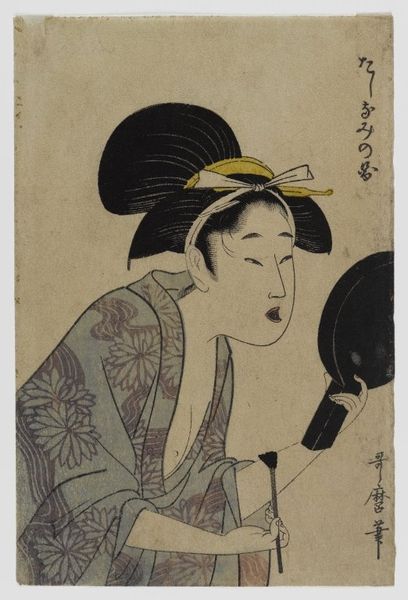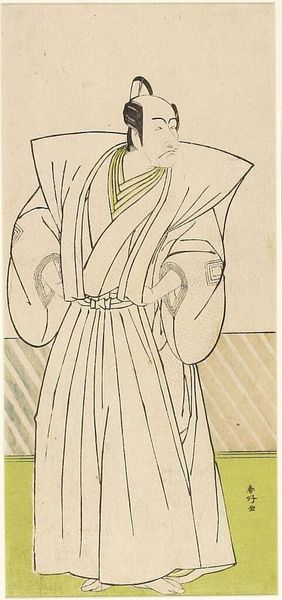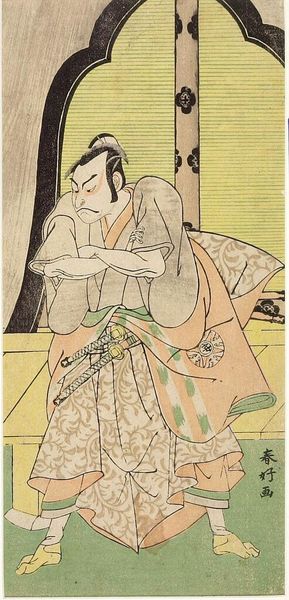
Copyright: Public domain Japan
Curator: This is "Les Vieux Manuscrits, Corée-Séoul," a 1948 woodblock print by Paul Jacoulet. Editor: My initial impression is one of studied serenity. The light colors, the seated posture... it’s an incredibly calm composition. Curator: Jacoulet masterfully employs line and color here. The stark white robe against the light blue background creates a striking contrast, focusing our attention on the man’s contemplative activity. Note also the formal elegance of the stylized line work. Editor: But what is the socio-political reality behind that serene facade? Post-colonial Korea in 1948 was in turmoil, wrestling with identity after decades of Japanese occupation, right on the cusp of outright war. How might this idealized depiction interact with that reality? Curator: Your point regarding context is, of course, crucial, but let us not disregard the intrinsic elements. Jacoulet clearly borrows from the Ukiyo-e tradition. The flattening of perspective and the emphasis on decorative elements are key. Look, for instance, at the meticulously rendered patterns on the cushion and the man’s ornate hat. Editor: Precisely. While adopting stylistic elements from Ukiyo-e, the artist perhaps exoticizes Korean culture. This work may offer a problematic lens onto a complex cultural and historical moment by emphasizing tradition while eliding ongoing struggles with colonial history, social stratification, and cultural production. What message is communicated through the seeming lack of attention to the politics roiling society? Curator: The detail lavished upon the figure's hands holding the manuscript emphasizes the act of scholarship. Notice how the texture invites us to consider materiality, even process itself? This haptic invocation underscores not the political climate but an ageless appreciation of intellectualism. Editor: That reading of intentional "agelessness," though, overlooks that it may be less universal observation and more cultural flattening... something which art needs to acknowledge even today. Curator: I appreciate your framing of how art continues to push dialogues on socio-cultural exchange. Editor: Yes, and with a complex piece like this, one is left contemplating how seemingly simple portraits open windows to so much.
Comments
No comments
Be the first to comment and join the conversation on the ultimate creative platform.
